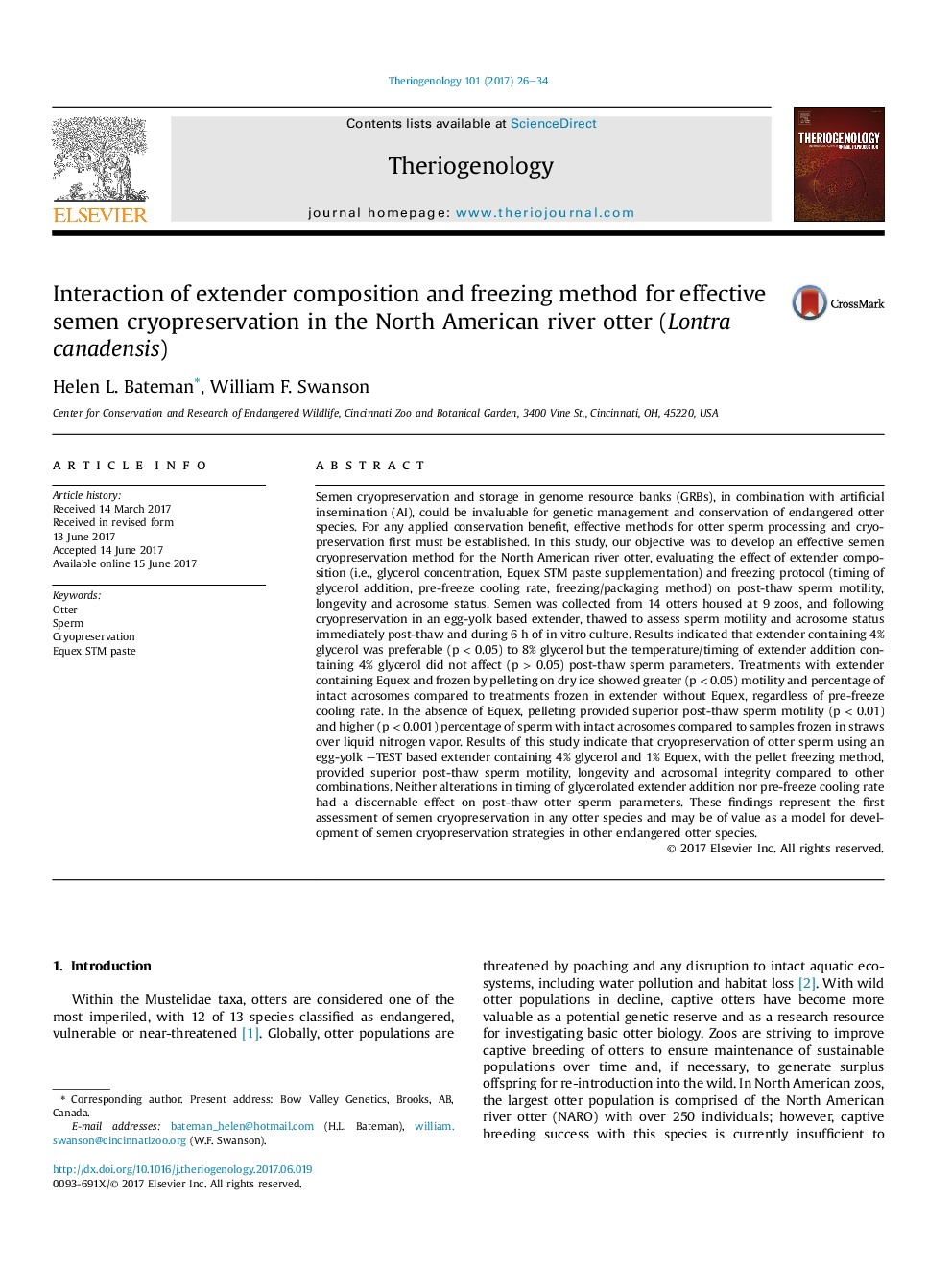| Article ID | Journal | Published Year | Pages | File Type |
|---|---|---|---|---|
| 5522960 | Theriogenology | 2017 | 9 Pages |
â¢This study provides the first investigation into cryopreservation methods for any otter species.â¢Addition of glycerolated extender should be added initially at room temperature, prior to pre-freeze cooling.â¢Pre-freeze cooling rate had no discernable effect on post-thaw sperm motility, longevity or percentage of intact acrosomes.â¢Best results were obtained with a TEST- egg-yolk based extender containing 4% glycerol, 1% Equex, frozen by pellet method.
Semen cryopreservation and storage in genome resource banks (GRBs), in combination with artificial insemination (AI), could be invaluable for genetic management and conservation of endangered otter species. For any applied conservation benefit, effective methods for otter sperm processing and cryopreservation first must be established. In this study, our objective was to develop an effective semen cryopreservation method for the North American river otter, evaluating the effect of extender composition (i.e., glycerol concentration, Equex STM paste supplementation) and freezing protocol (timing of glycerol addition, pre-freeze cooling rate, freezing/packaging method) on post-thaw sperm motility, longevity and acrosome status. Semen was collected from 14 otters housed at 9 zoos, and following cryopreservation in an egg-yolk based extender, thawed to assess sperm motility and acrosome status immediately post-thaw and during 6 h of in vitro culture. Results indicated that extender containing 4% glycerol was preferable (p < 0.05) to 8% glycerol but the temperature/timing of extender addition containing 4% glycerol did not affect (p > 0.05) post-thaw sperm parameters. Treatments with extender containing Equex and frozen by pelleting on dry ice showed greater (p < 0.05) motility and percentage of intact acrosomes compared to treatments frozen in extender without Equex, regardless of pre-freeze cooling rate. In the absence of Equex, pelleting provided superior post-thaw sperm motility (p < 0.01) and higher (p < 0.001) percentage of sperm with intact acrosomes compared to samples frozen in straws over liquid nitrogen vapor. Results of this study indicate that cryopreservation of otter sperm using an egg-yolk -TEST based extender containing 4% glycerol and 1% Equex, with the pellet freezing method, provided superior post-thaw sperm motility, longevity and acrosomal integrity compared to other combinations. Neither alterations in timing of glycerolated extender addition nor pre-freeze cooling rate had a discernable effect on post-thaw otter sperm parameters. These findings represent the first assessment of semen cryopreservation in any otter species and may be of value as a model for development of semen cryopreservation strategies in other endangered otter species.
